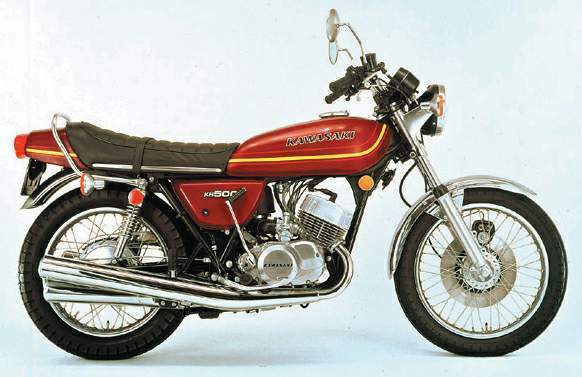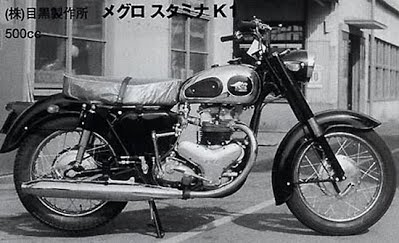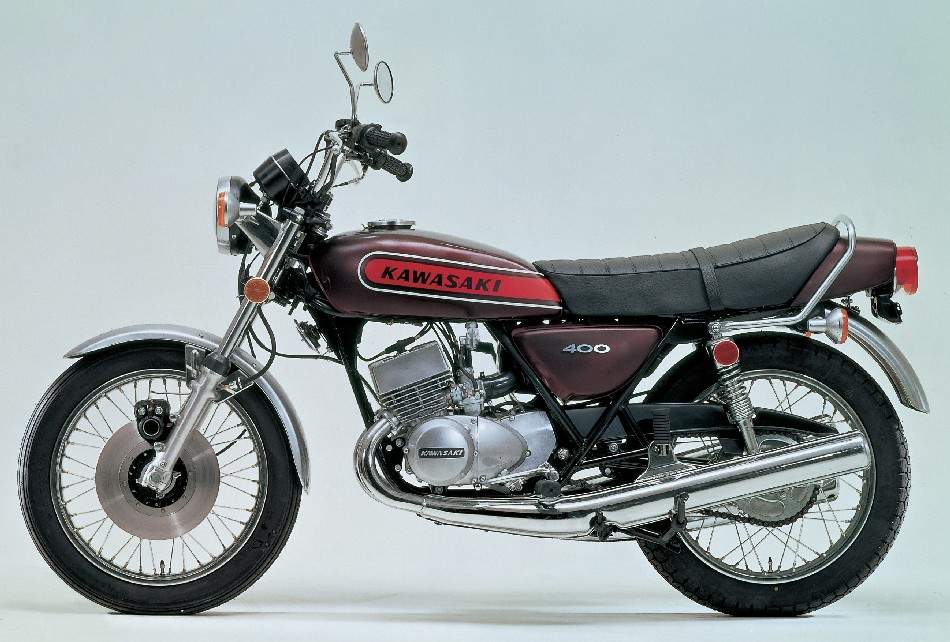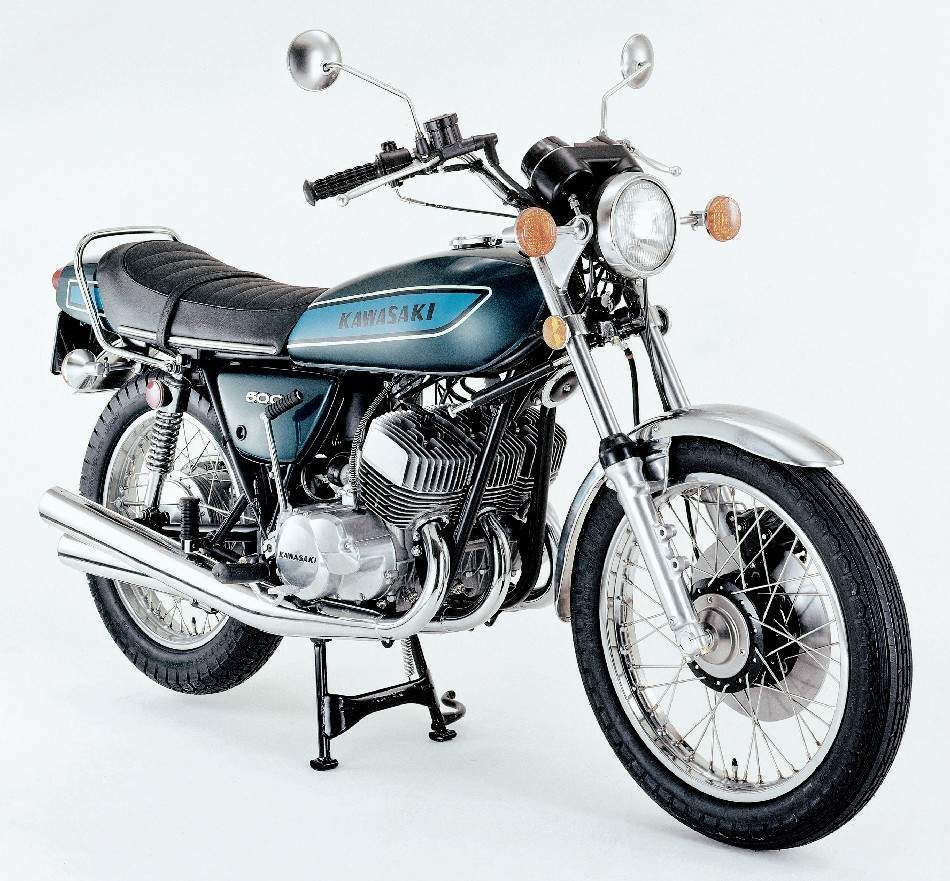The KH 500 was launched to the public in 1976, the initials in the name stood for “Kawasaki Highway”.
It was available in two colors: Burgundy and Copper. It was an improvement from the H1-series with its three-way fuse system, fastening gas cover, and enhanced braking system.
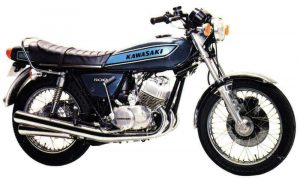
1976 KH500-A8
Other changes included the front forks, front wheel, footstools, handlebar grips, and headlamp. The latter was shaped into a seven-inch piece that included in the 750 and 900 models, too.
The company saw itself in obligation to modify the mufflers and air cleaner system yet again because of the emission control requirements in America, but the use of these obstructive parts and reduced jets in the carbs suppressed the performance of the bike. The handling was much upgraded in comparison to past models but it wasn’t enough to convince customers.
H2-750 1971-1975
This sample came with the excitement Kawasaki showed over the success of the 500 triple. Its top speed was of 126 mph with acceleration second to none. The H2 was able to pull wheelies in the first three workings without even trying, and it was one of the major sponsors of Kawasaki Triple’s bad (in all the sense of the word) reputation.
1971/1972 H2-750 MACH IV
The model was launched in two colors: Candy Blue or Candy Gold. The front fireguard was dyed to match the rest of the bike and CDI ignition was used to deliver the sparks, ran by the magneto and not the battery, at the same time as the five-speed gearbox was an upgraded adaptation of the 500 boxes with a more solid clutch assembly. Three 30mm carbs afforded the additional gas and a renewed two-stroke oil pump was fixed to lube the bigger crankshaft. Two steering dampers were added, one chafing and one hydraulic, but the handling was still rather weak. The front disk brake was the same one than in the H1-B 500 and the company offered a voluntary extra right-hand brake system. The large rear drum brake was more than adequate for the H2 and was later used on the Z1 models.
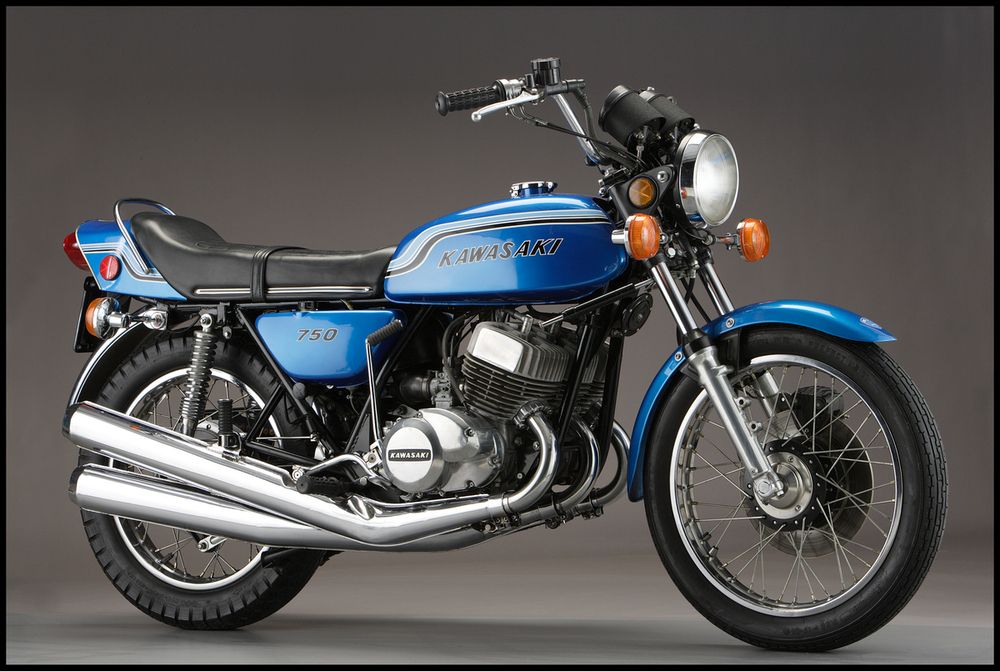
1973 H2-A
Once more, two colors were presented: Candy Gold or Candy Purple.
The front fire screen was chromed instead of painted, and the lateral panel insignias were metal badges as an alternative for stickers. The rear screen was changed and a vessel for an auxiliary arrangement of plugs was fixed into the end piece.
1974 H2-B
The entire contour of the motorcycle was altered to maintain it consistent with the H1-E and the new S3-400. There were several major modifications done to this model, specifically to the instruments, frame, chair, frame, footstools, stands, fire screens, handlebar controls, rear shocks, electrics, gas lid, and the tail light. The rear swingarm was stretched out to better the handling and to decrease the “wheelie” incidents. The apparatus was fixed with the crankcase check valves from the H1-E and the crankshaft, cylinders, and pistons were marginally altered.
The exhaust system was adjusted and the silencers were now lengthier and circular and neoprene fixed at the rear. Some samples, particularly American bikes, were fashioned with a one-piece exhaust pipe and ring-shaped holes in the crankcases seemingly to take rubber bushes. Oddly enough, merely the metal bushes were added. The rasping steering damper was ditched but the hydraulic one stayed.
1975 H2-C
The fuel tank was enlarged, so the seat was made smaller to give the H2-C a lengthier, silkier look. The steering damper was relocated from the right side to the left of the casing and minor modifications were made to the instruments, grab rail, rear shocks, lateral panel badges, and exhaust mountings.
The company substituted the H2 model with a 750 twin four-stroke at the end of the year1975, which proved to be a bad decision, but then again emission controls in the U.S. would not consent the triples to remain to pump out their contaminating gases for much longer.
There was no official KH750 presented to the public and there is no available information regarding it or even acknowledging as a project from the company, but it is believed that this sample was somewhat of a prototype model that never actually made it to production. The speculation for this started when a motorcycle seen at the Isle of Man TT races in 1976 held a KH750 side panel insignia and enjoyed some obvious variations from the KH500.
Just as much, the H2 enjoyed a good run all over the world for quite a several years after its debut in the motorcycle scene, even obtaining a water-cooled motor and numerous countries counted with a “Triple Owner’s Club” where the H2 was very revered to the point of considering it the second most important motorcycle in Kawasaki’s history, only outshined BY the Z1-900.

